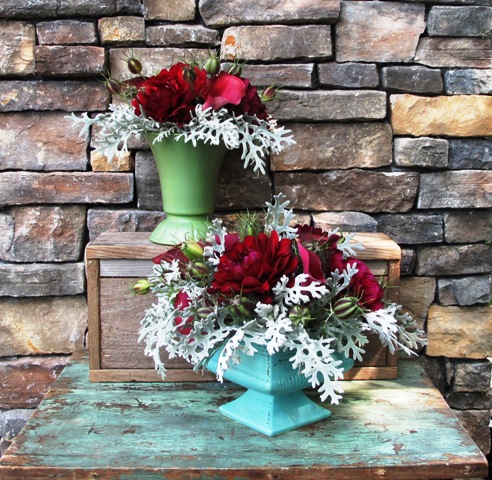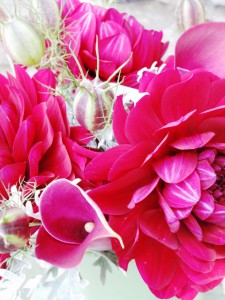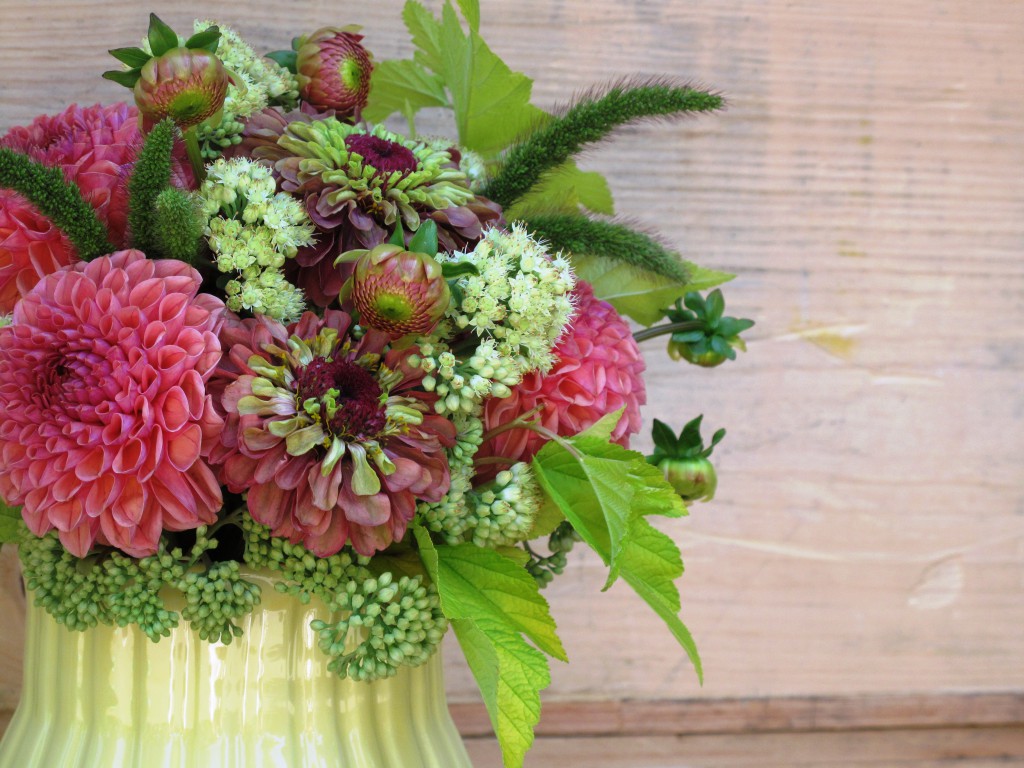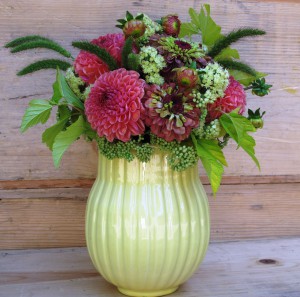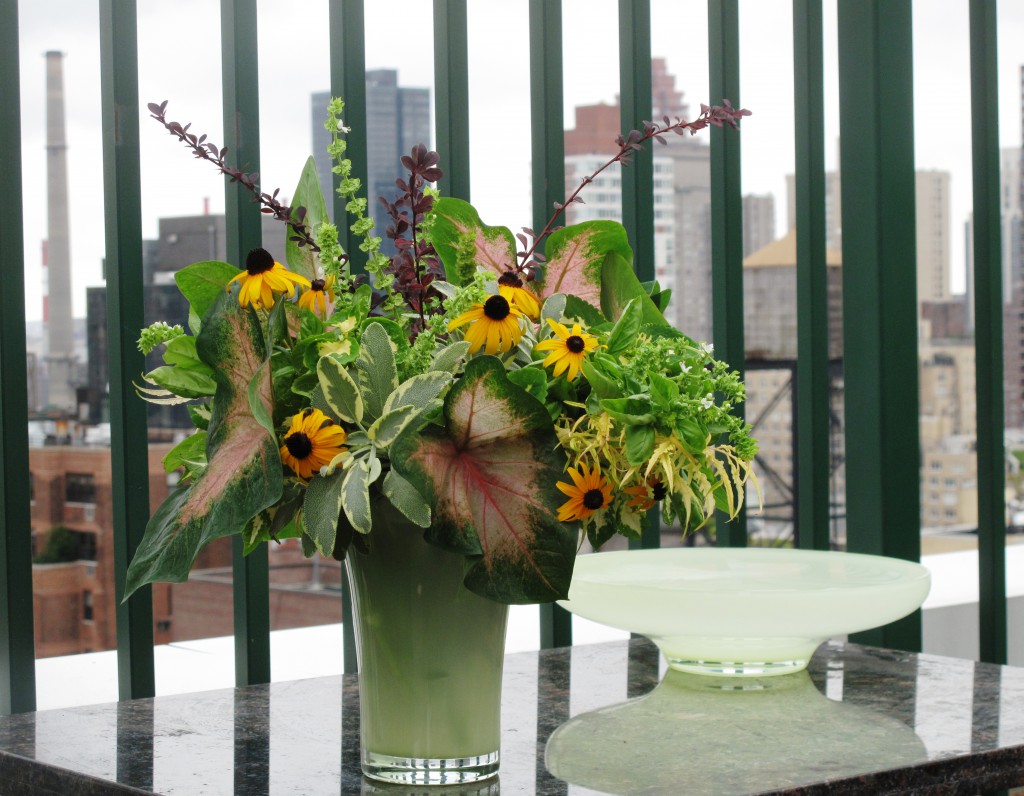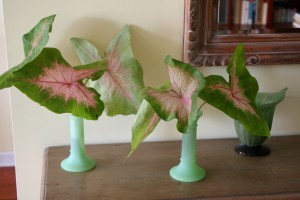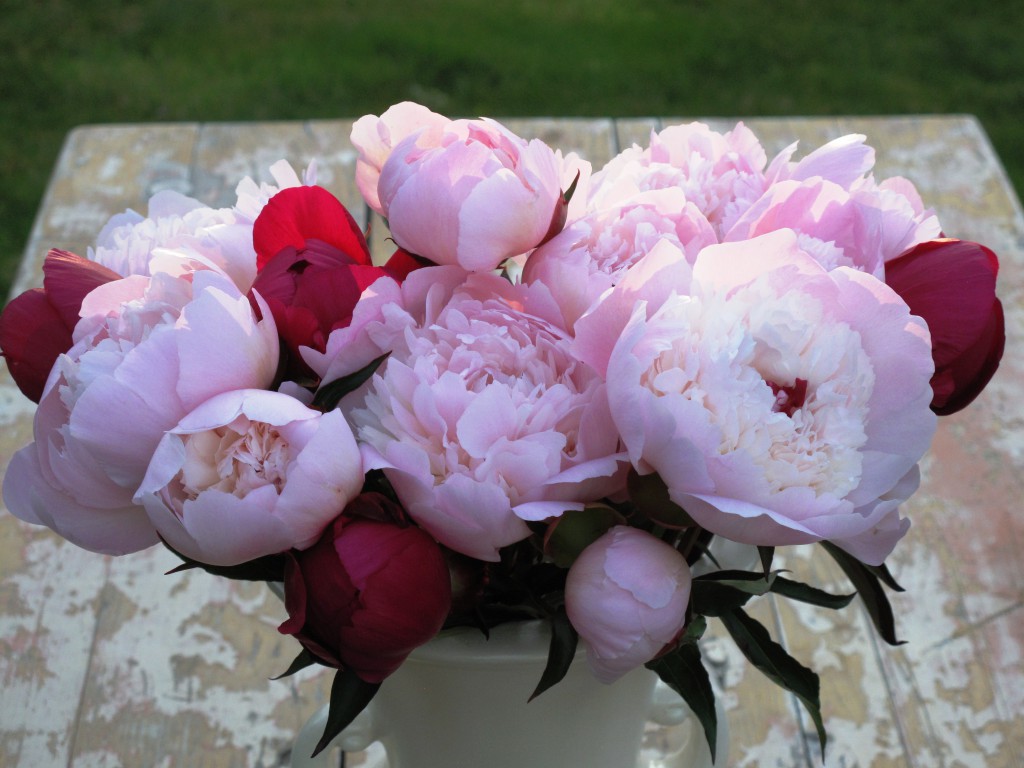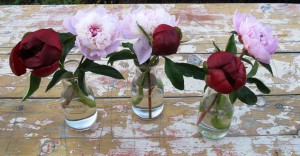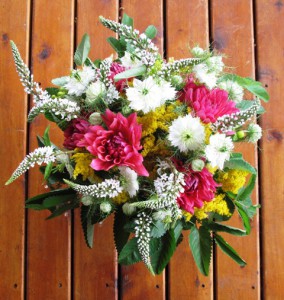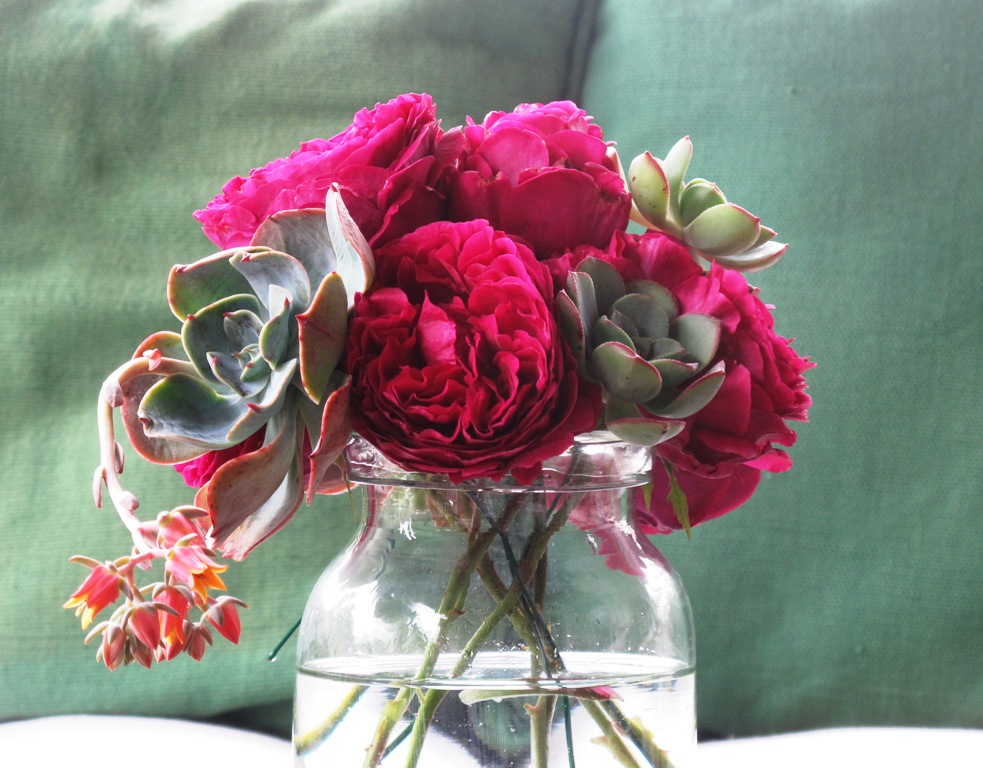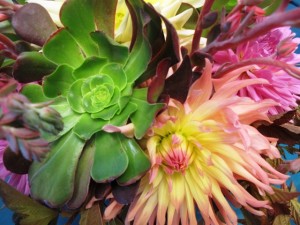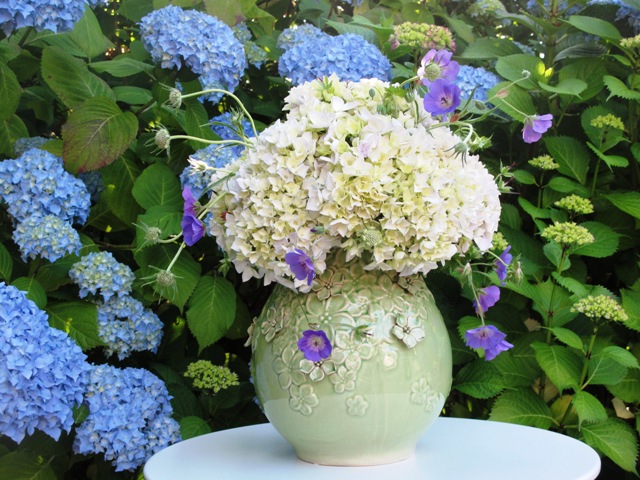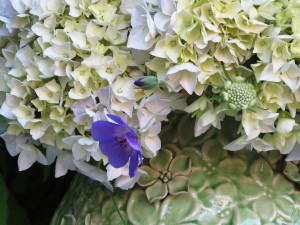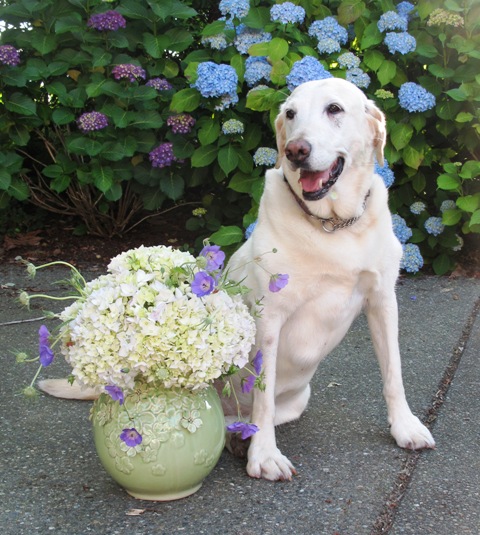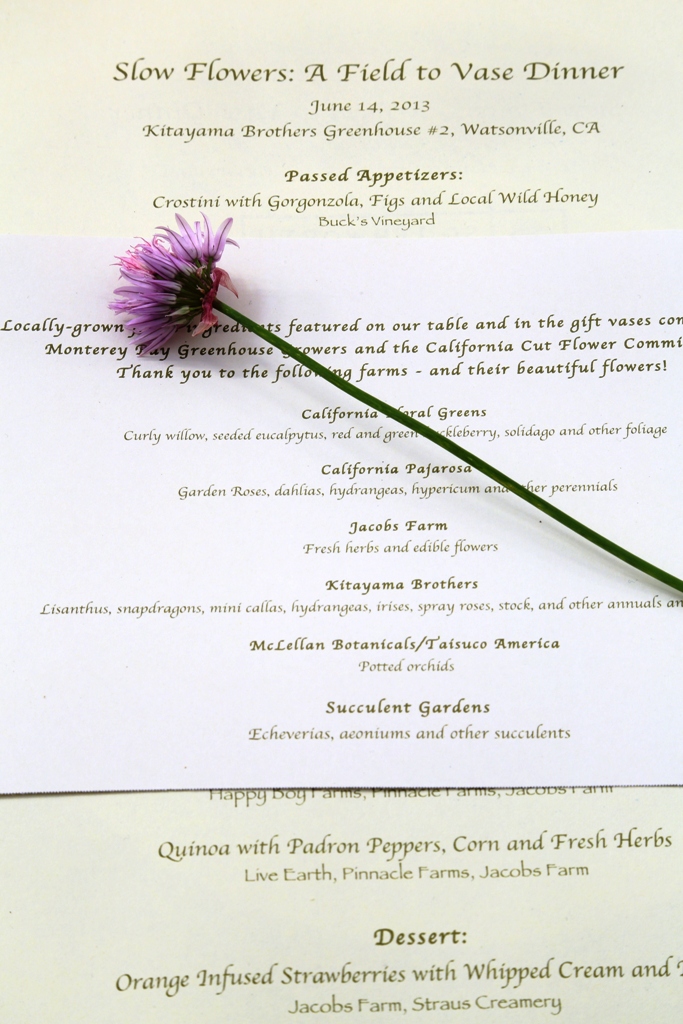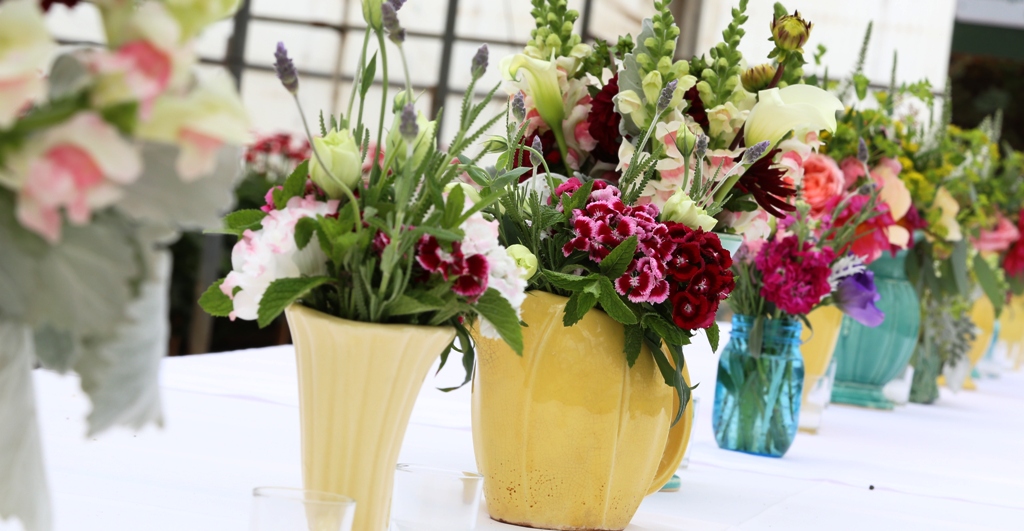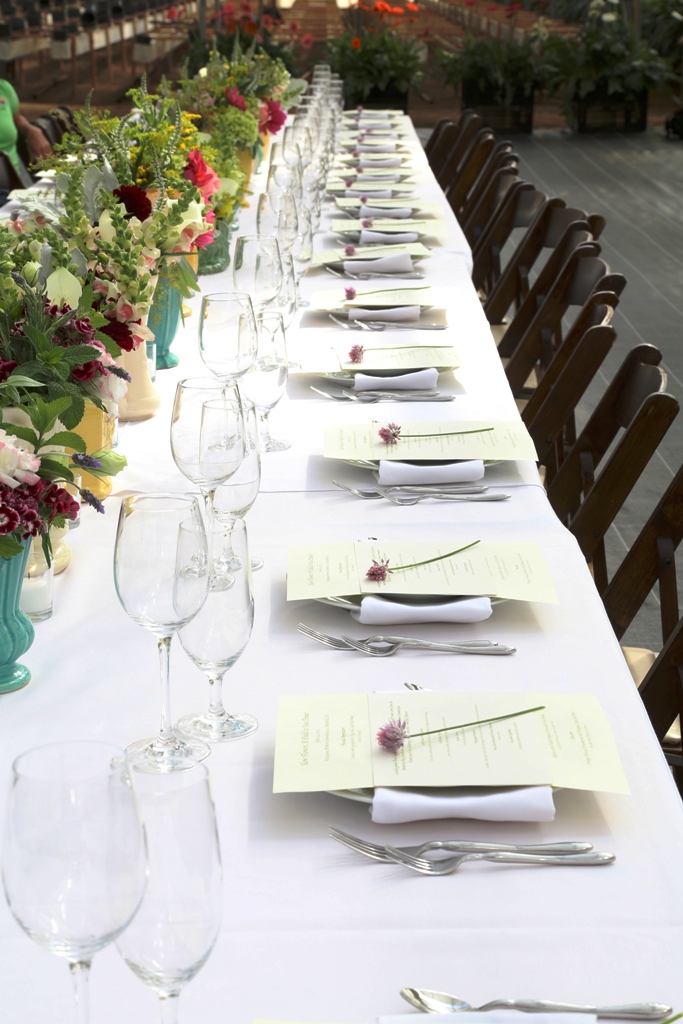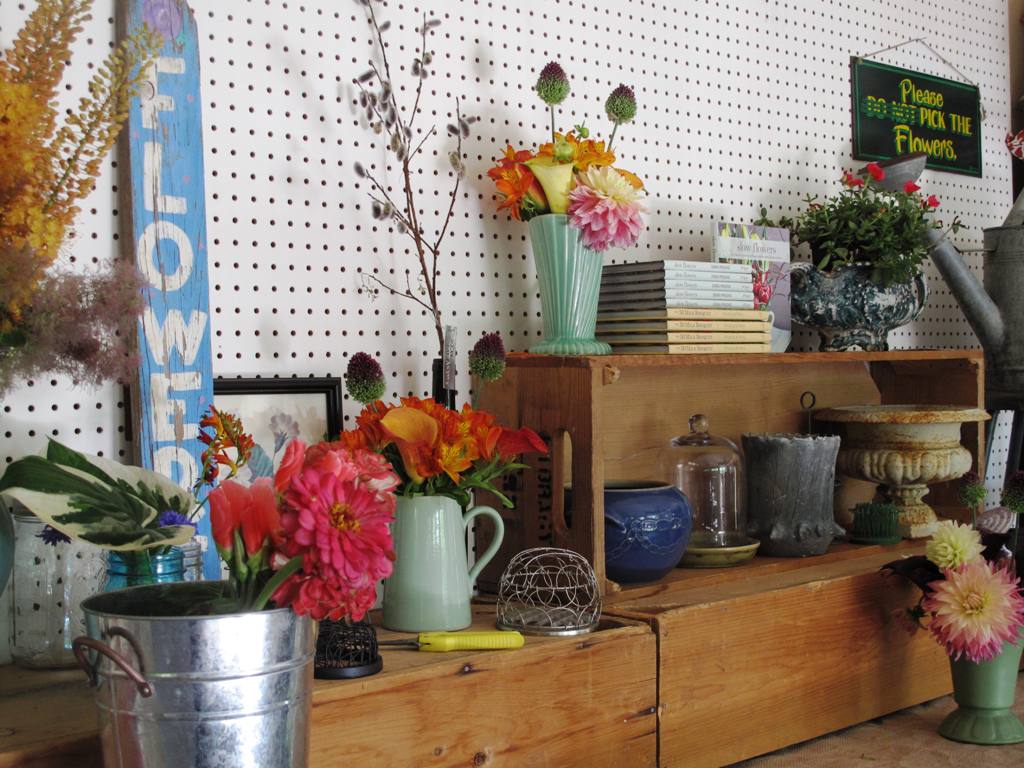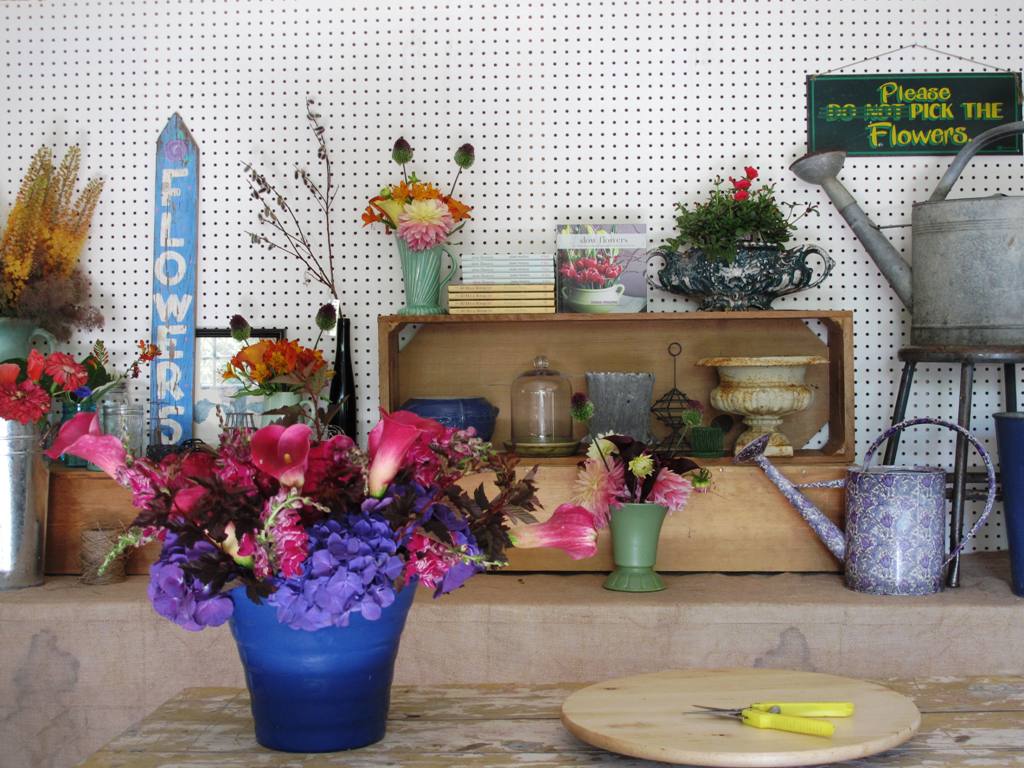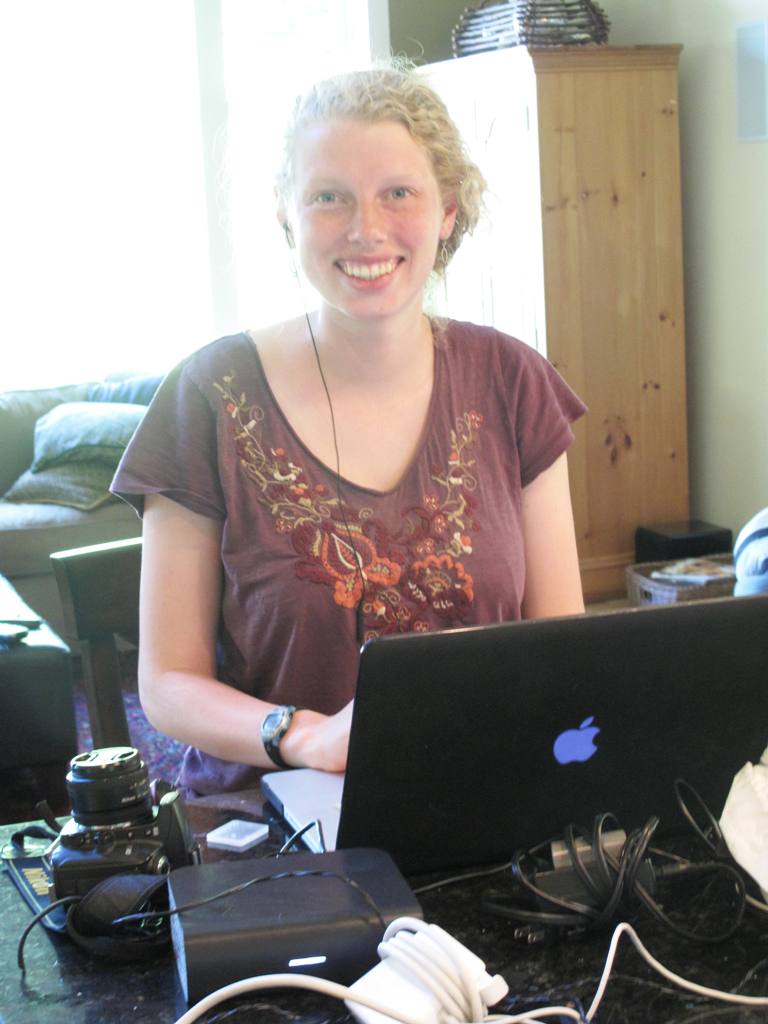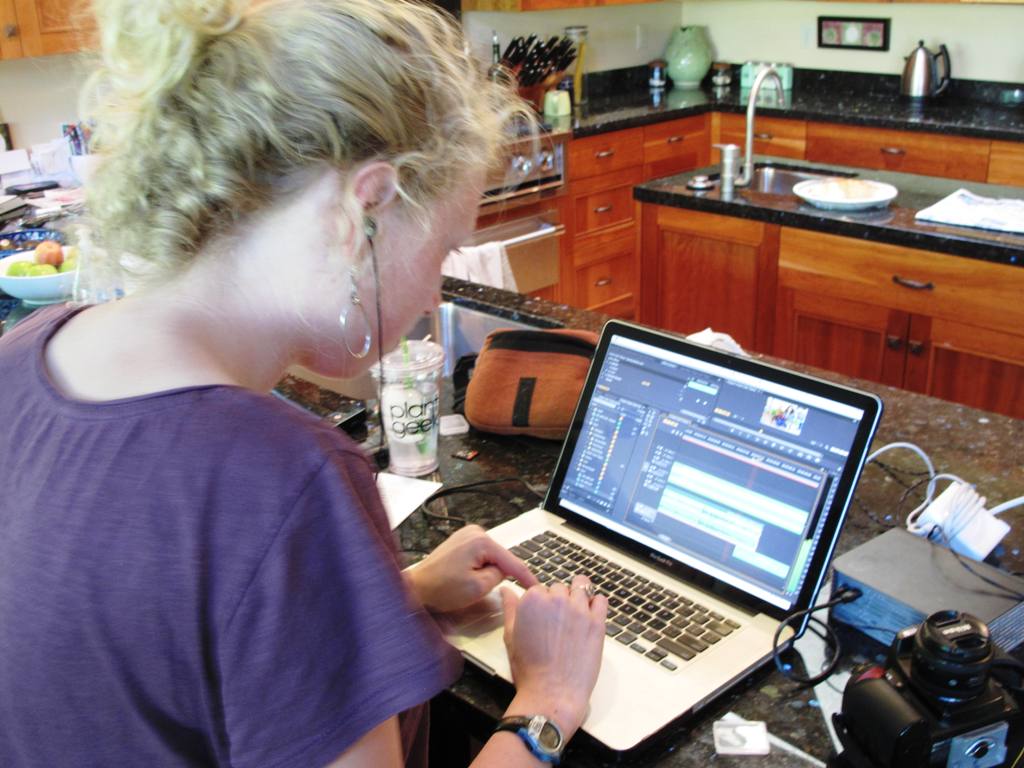FRUIT AND FLOWERS
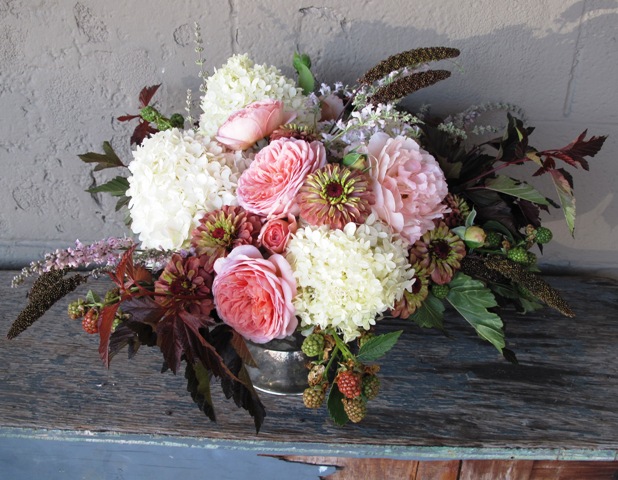
Bowls and urns are ideal for low tabletop arrangements. And this vintage silverplate bowl is perfect for summer’s best blooms.
Ingredients:
9 stems ninebark (Physocarpus opulifolius ‘Diabolo’), grown by Jello Mold Farm
3 stems Hydrangea paniculata ‘Limelight’, grown by Oregon Coastal Flowers
7 stems ‘Abraham Darby’, a David Austin English rose grown by Westmont Park Roses
7 stems Zinnia elegans ‘Queen Red Lime’, grown by Jello Mold Farm
7 blades burgundy millet (Setaria viridis), grown by Charles Little & Co.
5 stems thorn-free blackberries (Rubus fruticosus), grown by Charles Little & Co.
5 stems Vitex agnus-castus, grown by Charles Little & Co.
Vase:
7-inch tall x 8-inch diameter vintage Gorham silver plate bowl
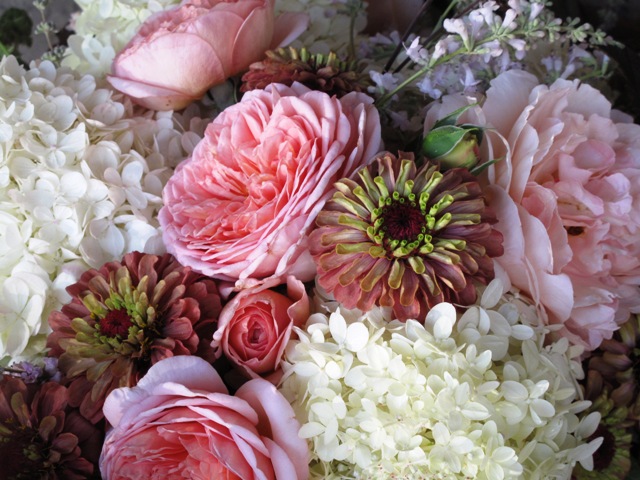
Beauty is in the details here.
Seasonal Choices
Pretty enough to eat: Adding fruit and vegetables to a floral arrangement is a technique as old as the still-life paintings of the 17th century Dutch Masters.
The practice has returned and floral designers are harvesting all sorts of edibles from their kitchen gardens and farmers’ market stalls. In addition to the yummy blackberries used here, other delicious ingredients can include Alpine strawberries, unripe plums or crab apple fruit on the branch, cherry tomatoes on the vine, colorful Easter egg radishes and bright orange kumquat fruit (insert a wooden pick for easy placement). In general, it’s best to use unripe fruit or vegetables, so they last as long as the flowers.
